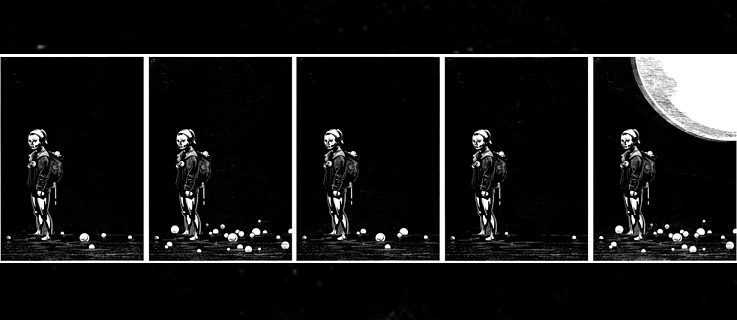The new K - Dignity is inviolable
Call for picture short stories
Drawings for a re-reading of Nguyen Du‘s "Truyen Kieu" today.
The Goethe Institute is inviting cartoonists, caricaturists, illustrators, and animators from Vietnam to submit a 3-panel short story, animated drawing or animation on KIEU’s contemporary relevance. The guiding question is:
How do we interpret, how do we read KIEU today? What does our KIEU look like today?
| Format | 983 px (W) x 427 px (H) Deadline | October 31, 2019 send to Wilfried.Eckstein@goethe.de |
Briefing:
Nguyen Du’s epic poem Truyen Kieu is a literary masterpiece and an integral part of Vietnam's cultural heritage. From the end of the 19th century, it has found its way into Vietnam’s national educational canon. To this day, it is considered a Vietnamese-language treasure trove of life lessons for both men and women. The epic has inspired paintings, renarrations, theater productions, and film adaptations. To this day, the story lives on in quotes and adages that provide comfort and inspire hope. During the hundred-year-long liberation struggle of Vietnam, the epic offered a poetic promise that all human suffering would eventually pay off in a positive way. For at the end of her odyssey, Kieu does not find death, but rather salvation and a new, self-determined life.At the end of her calamitous story, Kieu assumes a dignified stance towards herself, her family, her city, and the whole country. She autonomously decides how to continue her life. Her decision is a shining example of a woman’s resolve to lead a self-determined life in dignity.
Why is the Goethe-Institute, the German cultural center, working with this linguistic masterpiece that is so deeply revered in Vietnam? The work has been translated and thus found new readers. Whenever a great literary work is translated into another language - as is the case with Cervantes, Shakespeare, Chekhov, or Goethe - its depth and breadth is then explored by a new readership. Will it also appeal to and cast its spell on people from other cultures? Will it become relevant in the new cultural context and spawn new interpretations? There are examples from the realm of music, such as ‘Ode to Joy’ from Beethoven’s Symphony No. 9. Any great work of art will face this challenge of whether it will appeal to audiences in other countries and languages. If it does, its relevance begins to transcend the boundaries of its culture of origin. As the Goethe Institute picks up Nguyen Du’s Truyen Kieu, it will boost its relevance and fame beyond Vietnam’s national, linguistic, and cultural borders.
However, a modern Western reader will hardly interpret Kieu as a metaphor for Vietnam’s national tale of suffering and resilience. It’s much simpler than that: The centuries-old recurrent theme that resonates throughout this narrative is the oppression of women and the trafficking of people. From this perspective, Truyen Kieu seems like a tale full of gruesome, some tender images that all revolve around an oppressed woman. She suffers many horrors and finds little joy in life. She is the victim of heinous crimes; her body and soul are tortured. Like any human being, she seeks happiness, wants to live, love, and be loved. But she keeps being oppressed and pushed off her path towards happiness. A modern reader of such a story will inevitably ask about progress achieved in history, about the role of humanity and of dignity in our world. What image of humankind do we represent? What image of womanhood is at the core of our culture? And finally, how do we interpret, how do we read KIEU today? What does our KIEU look like today?
In July, the Goethe Institute organized a conference featuring various interpretations of Nguyen Du’s Truyen Kieu. The audience heard about the wealth of knowledge about historical connections with original Chinese material and explored issues concerning the role of women today. What about a single, a married, or a divorced woman, with or without children? What cultural patterns still persist to bend women to the will of a society dominated by male values and habitual authority? How do women’s new freedoms and self-confidence open up a new image, a new interpretation of Kieu? How do we interpret, how do we read KIEU today? What does our KIEU look like today?
